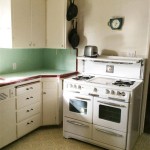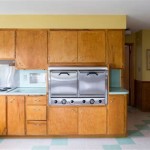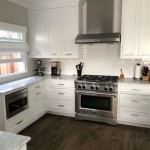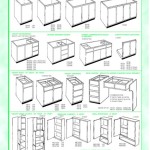How to Install Kitchen Kickboards: A Comprehensive Guide
Kitchen kickboards, also known as toe kicks, are a crucial element in any kitchen design. They not only conceal the gap between kitchen cabinets and the floor but also protect the cabinet base from water damage and impact. Installing kitchen kickboards is a straightforward task that can significantly enhance the aesthetics and functionality of your kitchen.
Materials Required
- Kitchen kickboards ( MDF or Plywood )
- Measuring tape
- Pencil
- Miter saw or miter box
- Nail gun or brad nailer
- 1 1/4-inch nails or 1 1/2-inch brad nails
- Countertop adhesive or construction adhesive
- Caulk gun and caulk
Step-by-Step Installation Guide
Step 1: Measure and Cut
Measure the length of the area where the kickboards will be installed. Subtract 1/4 inch from the total length to allow for expansion and contraction. Mark the cut line on the kickboard and cut it using a miter saw or miter box.
Step 2: Prepare the Kitchen Cabinets
Clean the surface of the kitchen cabinets where the kickboards will be attached. If the cabinets have a toekick molding, remove it. Mark the height of the kickboard on the cabinets.
Step 3: Apply Adhesive
Apply countertop adhesive or construction adhesive to the back of the kickboard. Ensure even distribution of the adhesive.
Step 4: Attach the Kickboards
Press the kickboard against the cabinets, aligning it with the marked height. Secure the kickboard using a nail gun or brad nailer. Drive the nails or brads into the cabinets at an angle to ensure a strong hold.
Step 5: Join the Kickboards
If multiple kickboards are required, cut a 45-degree angle on the ends of the boards. Apply adhesive on the cut surfaces and press the boards together. Secure the joint using nails or brad nails.
Step 6: Caulk
Apply caulk along the joints between the kickboards and the cabinets. Smooth the caulk with a caulk gun or your finger. The caulk will prevent moisture from penetrating and protect the kickboards from damage.
Additional Tips
- Use a level to ensure the kickboards are level both horizontally and vertically.
- If the kickboards are too short, you can add a filler strip between the cabinet and the kickboard.
- Clean any excess adhesive or caulk immediately after application.
- Allow the adhesive or caulk to cure completely before using the kitchen.
Conclusion
Installing kitchen kickboards is a simple and inexpensive way to improve the appearance and functionality of your kitchen. By following the steps outlined in this guide, you can achieve a professional-looking finish and enjoy the benefits of kitchen kickboards for years to come.

How To Install Toekick In Your Kitchen 2024

How To Install Kickboard Diy At Bunnings

Kitchen Kickboards Taken Fron The Renovation Series

How To Fit Kitchen Plinths Pelmets Cornices

How To Fit Kitchen Plinths Halman Thompson

How To Install Kickboard Diy At Bunnings

Cooke Lewis And It Range Fitting The Plinth Onto Legs

How To Diy Your New Kitchen Kickboards The Door Company

Fitting A Kitchen Plinth The Carpenter S Daughter

Kickboards Old Or New School Mdc Furniture Design








